Anthony Wong Public Archives
The UO College of Design and Department of Architecture welcomes you to this archive, made possible by the generous support of Mr. Anthony “Tony” S.O. Wong, B-Arch ’76. The Anthony Wong Public Archives is an online repository of research, conference papers, posters, presentations, and publications by undergraduate and graduate students in the Department of Architecture who have been selected to receive an Anthony Wong Scholarship for Research in Sustainable Design. The Anthony Wong Scholarships are specifically dedicated to sharing UO architecture students’ cutting-edge research and discovery in sustainable design by UO students, and broadening students’ professional experiences by providing financial assistance for those students who have been invited to present their research findings at national and international conferences.
Anthony Wong is a retired director of Woo, Chow, Wong & Partners, an award-winning architectural firm in Asia. After completing his studies in the UO architecture program, he went on to earn his Master’s in Architecture from the University of Washington. He is an active member in a number of professional societies including the Hong Kong Institute of Architects, the Royal Institute of British Architects, the Australian Institute of Architects, the British Institute of Arbitration and the Hong Kong Institute of Arbitration.
Mr. Wong served on the College of Design advisory board and currently serves on the University of Oregon Foundation’s Board of Trustees.
2015-2016
The Stellar Apartments: Dynamic Stories from Passive Buildings
Graduate Student Researchers: Lindsay Rasmussen, Eric Schmidt, Ashley Tuffo; Faculty Advisor: Alison Kwok
Passive Low Energy Architecture (PLEA) 2015 Conference, September 9-11, 2015, Bologna, Italy
Abstract: Energy and building performance monitoring is an important pursuit for the advancement of sustainable design. Especially in the United States, where home construction is often code-minimum, performance monitoring helps validate new and effective techniques. With the growing movement of passive house design in the United States, energy monitoring and construction documenting aids future designers and builders push boundaries and lead interested clients. The research presented below is a part of this pursuit. The Stellar Apartments’ passive house building is the first certified affordable, multi-family passive house in the US. Completed in August 2013, and found in Eugene, OR, the building has been undergoing continuous energy monitoring alongside an identical building built to an optional Oregon State energy standard, Earth Advantage. The two buildings serve as a pilot-study for the architects, contractor, and passive house consultants as they dealt with the complexity of passive house, many for the first time. The energy data has been used to inform the buildings’ developer, architect, and contractor’s practice, as they push for a middle ground of affordable, and efficient housing. This paper not only highlights the energy data from the first 18 months of collection but also recounts narratives from the design and construction process. Interviews were held with members of the design team, contractor, developer, and property management and will hopefully serve to enlighten others as they pursue advanced buildings. The interviews revealed a number of themes about collaboration, innovation, sharing of ideas, expense, and risk-taking with this first-time project. In summation, this paper examines both the energy efficiency of the building, and also the trials and success of the team that built it, and is presented to help support future endeavors, and promote better, healthier, more economically feasible buildings.
 Lindsay Rasmussen: Lindsay is currently pursuing a Bachelor of Architecture degree (2017) with a focus on sustainable design and research. She is passionate about the movement to carbon neutral architecture and the essential components involved in reaching that goal: research, education, and great design. Lindsay is very grateful to be involved in the Stellar Research group, as is thankful for the support and encouragement from the Department of Architecture and the Anthony Wong Scholarship.
Lindsay Rasmussen: Lindsay is currently pursuing a Bachelor of Architecture degree (2017) with a focus on sustainable design and research. She is passionate about the movement to carbon neutral architecture and the essential components involved in reaching that goal: research, education, and great design. Lindsay is very grateful to be involved in the Stellar Research group, as is thankful for the support and encouragement from the Department of Architecture and the Anthony Wong Scholarship.
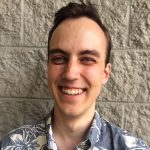 Eric Schmidt: Eric is currently pursuing a Master of Architecture degree (2016) with a focus in structural systems and a Teaching in Technical Subjects Certificate. Eric holds a Bachelor of Art in Anthropology from Whitman College and is interested in regional vernacular design with respect to building materials and construction techniques. He feels fortunate to receive Anthony Wong Scholarship that allows exploration of research and practice.
Eric Schmidt: Eric is currently pursuing a Master of Architecture degree (2016) with a focus in structural systems and a Teaching in Technical Subjects Certificate. Eric holds a Bachelor of Art in Anthropology from Whitman College and is interested in regional vernacular design with respect to building materials and construction techniques. He feels fortunate to receive Anthony Wong Scholarship that allows exploration of research and practice.
 Ashley Tuffo: Ashley is currently pursuing a Master of Architecture degree (2016) with a focus in environmental control systems and a Teaching in Technical Subjects Certificate. She believes that data from existing buildings can help designers make informed environmentally and socially conscientious decisions. She is very grateful to the University of Oregon’s Architecture Department and the Anthony Wong Scholarship for their continued support of her research and teaching endeavors.
Ashley Tuffo: Ashley is currently pursuing a Master of Architecture degree (2016) with a focus in environmental control systems and a Teaching in Technical Subjects Certificate. She believes that data from existing buildings can help designers make informed environmentally and socially conscientious decisions. She is very grateful to the University of Oregon’s Architecture Department and the Anthony Wong Scholarship for their continued support of her research and teaching endeavors.
Measure Twice – Cut Once: Prototypes of Dynamic Facades
Graduate Student Researchers: Tanvi Dhar, Ryan Feibing; Faculty Advisor: Ihab Elzeyadi
American Solar Energy Society (ASES) 2015 Solar Conference , July 28-30, 2015, State College, Pennsylvania
Abstract: The essential roles of the building facades—providing shelter, form, and image—can be expanded to significantly improve building performance, including major reductions in energy use. Rather than a static enclosure, the building facade has the potential to redirect daylight, integrate natural ventilation, manage radiant heat transfers, generate energy, and provide visual and physical connections between inside and out. High performance, dynamic facade design can be realized in new construction and in strategic retrofits of existing buildings. Supported by HiPE lab and Oregon BEST, this project is intended to guide students/young professionals in a year-long investigation of a dynamic facade component leading to a scaled prototype construction and testing of this component. Objectives for the design of this component are:
- Enhancing transparency and aesthetics from the outside in as well as inside out.
- Harvesting and redirecting daylight deeper into the building
- Managing glare and brightness patterns for occupants’ visual comfort
- Solar control management for improved thermal comfort
- Provide opportunities for ventilation and control heat gains/losses
- Improved materiality/details and opportunities for scaling to multiple applications
 Tanvi Dhar: Tanvi is currently pursuing Master of Science in Architecture (2016) at the University of Oregon. She has a Bachelor of Architecture from Sushant School of Art and Architecture in Delhi, India. She is a registered architect in India and has over two years of work experience in sustainable and energy efficient housing and institutional design. Her Master’s thesis is to compare LEED v/s non-LEED elementary schools in Houston. She is interested in integrating sustainable design techniques as part of the design process from conceptual stage to project realization.
Tanvi Dhar: Tanvi is currently pursuing Master of Science in Architecture (2016) at the University of Oregon. She has a Bachelor of Architecture from Sushant School of Art and Architecture in Delhi, India. She is a registered architect in India and has over two years of work experience in sustainable and energy efficient housing and institutional design. Her Master’s thesis is to compare LEED v/s non-LEED elementary schools in Houston. She is interested in integrating sustainable design techniques as part of the design process from conceptual stage to project realization.
 Ryan Fiebing: Ryan Fiebing is a recent graduate of the M.Arch program (2015) at the University of Oregon with a focus on innovative building technology. He holds a B.S. in Architecture from the A. Alfred Taubman College of Architecture and Urban Planning at the University of Michigan in Ann Arbor. He is grateful to the Anthony Wong scholarship for the opportunity to attend and present at the Solar2015 American Solar Energy Society conference.
Ryan Fiebing: Ryan Fiebing is a recent graduate of the M.Arch program (2015) at the University of Oregon with a focus on innovative building technology. He holds a B.S. in Architecture from the A. Alfred Taubman College of Architecture and Urban Planning at the University of Michigan in Ann Arbor. He is grateful to the Anthony Wong scholarship for the opportunity to attend and present at the Solar2015 American Solar Energy Society conference.
2014-2015
Accessible Evacuation: Improving Fire Safety and Building Evacuation for People with Disabilities
Graduate Student Researcher: Olivia M. Asuncion; Faculty Advisor: Jenny Young
EDRA46LosAngeles, May 27–30, 2015, Los Angeles, CA
Abstract: Our abilities to make critical decisions about how we move through space are dramatically affected by the fear and confusion brought on by an emergency. The burden is further intensified as architectural barriers often pose problems with building evacuation, especially for people with disabilities.
Through interviews with people with a wide range of abilities, it becomes clearer that current building safety and evacuation standards cause feelings of dependency, invisibility, and hopelessness for those who cannot easily exit a building during an emergency. Architectural problems that lead to inaccessible evacuation are then identified through analysis and evaluation of the evacuation maps and other wayfinding strategies, areas of refuge, and egress in two buildings on campus.
This study demonstrates that the way most buildings are designed today cause the following problems:
1. Buildings are illegible due to the inadequate wayfinding strategies;
2. Lack of feasible vertical egress for people with mobility impairments;
3. Areas of refuge are often non-existent or invisible.
By recognizing these problems, we can seamlessly intertwine accessibility and building safety strategies into our designs by looking at potential improvements in environmental graphics and wayfinding strategies to create a clearer circulation for all building users, investigating solutions to allow for evacuation ease and independence, increasing the visibility and comfort of designated areas of refuge, and exploring and applying technology outside of architecture, all with both people with disabilities and able-bodied people in mind. By we can create places that are inclusive, seamless, beautiful, and safe.
 Olivia Mae Asuncion, M.Arch student
Olivia Mae Asuncion, M.Arch student
Olivia is currently pursuing an M.Arch degree with a focus on social and universal design. She received her B.A. in Architecture at UC Berkeley. Believing that environmental design can have a positive effect on the human condition, she has worked on various research projects with hopes of improving social equity and inclusiveness in architecture. She is very grateful to receive the Anthony Wong Scholarship and is excited to represent University of Oregon’s architecture department.
Resilience Found through the Identity of Place: The Resilience of a Traditional Settlement Pattern in Post-Disaster Haiti
Graduate Student Researcher: James Miller; Faculty Advisor: Howard Davis
IASTE International Association for the Study of Traditional Environments, December 14–17, 2014, Kuala Lumpur Malaysia
Abstract: There is a need for research in urban planning and housing in disaster risk management and disaster recovery, especially as it relates to the inclusion of endogenous knowledge. The post-disaster recovery of Haiti following the 2010 earthquake demonstrates how the current post-disaster reconstruction process for housing is fundamentally flawed: it overlooks the embedded knowledge of the affected population; emergency settlements remain for years following the disaster and endogenous social and cultural systems are not taken advantage of. There are potential solutions to mitigating vulnerability through traditional settlement patterns. Generative strategies for growth need to be applied that allow these patterns to succeed. A traditional settlement pattern of the Haitian Creole culture, the lakou, helps provide Haitians’ sense of place and has proven resilient through the tumultuous history of Haiti.
The lakou is the physical manifestation of human processes that have formed and adapted through generations. The lakou is a spatial manifestation of the familial social structure and takes the physical form of a courtyard or compound. This paper demonstrates the importance of the lakou through the analysis of post-disaster temporary settlements, showing that through their own devices endogenous inhabitants create the lakou in these settlements. The methodology, carried out over a seven-week period in Haiti, involved interviews, observations, and site mapping of four separate self settled post-disaster settlements. Qualitative coding was used to uncover the emergent themes. This study establishes the importance of the lakou in community vibrancy and demonstrates how the lakou adds to the resilience of the survivors living in such settlements. One discovery of the work—the unprecedented transformation of the lakou from a kinship based settlement pattern to a more inclusive non-familial pattern– points to the importance of this spatial and social manifestation in the development of community, among different families, in a settlement. This discovery brings to question whose tradition the lakou belongs to, the family or non-kinship groups. The dynamism of the lakou in post-disaster Haiti may reveal the changing perception and identity of family itself. In summary, the work validates not only the resilience of the lakou but also the changing, inclusive nature of the lakou system; knowledge that should be used to influence planning procedures in Haiti. This knowledge can potentially be used to turn a post-disaster settlement into a successful permanent settlement, helping to resolve one the major procedural issues of post-disaster reconstruction.
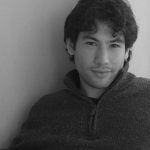 James Miller, PhD student
James Miller, PhD student
James Miller is pursuing a Ph.D. in sustainable architecture with a focus on social and cultural resilience of climate change ‘refugees’. He has a Bachelor of Architecture degree from the University of Notre Dame with a certificate in social entrepreneurship and a Master of Architecture degree from the University of Oregon. James has experience working on projects pertaining to micro-entrepreneurship, post-disaster recovery, public-housing, and culturally based design and currently instructs a course on Humanitarian Design. He is very grateful for the support of the department of architecture faculty and the opportunities provided through the Anthony Wong Scholarship.
Title: The Stellar Apartments: energy lessons over a year
Graduate Student Researchers: Ryan Dirks, Eric Schmidt, Ashley Tuffo; Faculty Advisor: Alison G. Kwok, Ph.D.,
9th Annual North American Passive House Conference, San Francisco Airport Marriott Waterfront, September 12–13, 2014, San Francisco, Calif.
Abstract: The first Passive House-certified affordable housing project in the United States was completed in August 2013. Stellar Apartments, a 54-unit affordable housing complex west of downtown Eugene, Oregon, seek to provide optimum occupant thermal comfort and energy performance without the commonly associated rent premiums. Each of the complex’s twelve buildings complies with the Earth Advantage (EA) Certification, but one building reaches further, targeting Passive House (PH) certification. The enhanced energy performance is anticipated to reduce the tenants’ monthly financial burden. Though the more ambitious energy targets required by each of the standards raised the project’s first costs, the project served a pilot test for the client (St. Vincent de Paul), the contractor (Meili Construction), the architect (Bergsund Delaney Architects), and SOLARC (energy and mechanical). St. Vincent de Paul of Lane County in cooperation with the NetZED Case Study Lab at the University of Oregon, are evaluating the energy use and indoor environmental quality (IEQ) of the two buildings over a two-year period. Specific areas to be examined include thermal comfort, energy use and energy savings. This presentation will offer an analysis of the first year of performance outcomes for the PH and EA buildings. Each building has six units with approximately the same area. Initially, the monitoring system data (by Site Sage) in each unit of both buildings were verified using handheld sensors for temperature, humidity, and VOCs. We installed CO2 monitors to verify correlation of VOCs to ventilation effectiveness. The research questions of this study are: What is the total energy use of the PH/EA? In comparison, does the PH use less energy than EA, in particular the space heating? What does the energy ‘pie’ of aggregated energy look like? Does the energy use reduction meet the 90% claim? Do carbon dioxide levels in the house meet acceptable recommended levels? Early findings show that occupants of the PH units are using approximately 60-70% less space heating energy than occupants in the EA units, and there was a lag time of about a week or so before the PH occupants turned on their space heating. The overall energy use “pie” averages are similar between PH and EA, however occupant behavior indicates strong potential for savings. Early measurements of carbon dioxide levels in both buildings, show good ventilation effectiveness. Critical lessons about working with tenant awareness, energy use, and concerns will be provided as it pertains to Passive House perceptions in affordable housing communities.
Ryan Dirks, M.Arch student
Ryan is researching ways to quantitatively compare the energy performance of wall assemblies. He has four years of experience in the healthcare design sector, and worked as the LEED project administrator for a new Children’s Hospital in his hometown of Iowa City. Outside of the office he has helped design and build a home expansion and frozen yogurt shop, and is an  avid climber and cyclist. He holds a Bachelor of Architecture from Iowa State University.
avid climber and cyclist. He holds a Bachelor of Architecture from Iowa State University.
Eric Schmidt, M.Arch student
Eric holds a Bachelor of Art in Anthropology from Whitman College. Eric is interested in how “sustainable” building technologies can integrate with human culture.
Ashley Tuffo, M.Arch student
Prior to pursuing a Master of Architecture degree, she had a career at a utility distribution company as a project manager working with utilities to implement Bonneville Power Administration rebate programs. She earned her Bachelor of Science degree from the University of Oregon in 2008. Ashley has a strong interest in energy and environmentally conscientious building control systems.
2013-2014
Workshop: Facing Landlessness: Growing Roots for Place Identity on New Ground
Graduate Student Researcher: James Miller; Faculty Advisor: Howard Davis
International Association People-Environment Studies Conference in Timisoara, Romania, June 23-27, 2014
Abstract: The rising frequency of environmentally triggered population displacement is creating more vulnerable communities, especially in underdeveloped nations. The projected rise in sea level will lead to the mass migration and permanent population displacement of millions of individuals around the globe. The unprecedented thresholds created through climate change lessen the adaptive strategies of indigenous populations and will make it more difficult, if not impossible, to rebound from their impacts. Building resilience within these communities to mitigate present climatic impacts and developing strategies to bridge new thresholds created through climate change will lead toward future resilience in displaced populations. The study of indigenous and informal knowledge systems within a coastal community and their migratory population will demonstrate the deep societal structures that allow for continuity and demonstrate the ability of knowledge systems to create risk reduction and climate change adaptation, benefiting local and transnational resilience building. This research focuses on the study of the building culture of an indigenous, coastal community facing the impacts of climate change and their first generation immigrant counterparts to understand the deep structures of their knowledge systems that demonstrate cultural capacity, continuity and resilience building. Climate ethnography, adapted from the work of Susan Crate, will be used to conduct this multi-sited study in order to develop cultural models of resilience and adaptation seen through the transference of traditional environmental knowledge. Using participatory research methods, the community of Rita of Majuro Atoll, Marshall Islands will be studied along with family members who have immigrated to Springdale, Arkansas. It is expected that this study will uncover indigenous knowledge systems within the culture of building that are essential for resilience building, mitigating vulnerability, and allowing for climate adaptation both locally and globally. The knowledge uncovered can be used to inform current disaster risk mitigation practices.
 James Miller, PhD student
James Miller, PhD student
James Miller is pursuing a Ph.D. in sustainable architecture with a focus on social and cultural resilience of climate change ‘refugees’. He has a Bachelor of Architecture degree from the University of Notre Dame with a certificate in social entrepreneurship and a Master of Architecture degree from the University of Oregon. James has experience working on projects pertaining to micro-entrepreneurship, post-disaster recovery, public-housing, and culturally based design and currently instructs a course on Humanitarian Design. He is very grateful for the support of the department of architecture faculty and the opportunities provided through the Anthony Wong Scholarship.
The Taccogna House Study: An Investigation of Indoor Environmental Qualities and Energy Use within an Oregon Passive House
Graduate Student Researchers: Lee Eckert, Joe Buccini, Ashleigh Fischer, Zack Vacovsky; Faculty Advisor: Alison G. Kwok, Ph.D.,
2014 ASHRAE High Performance Buildings Conference, April 7-8, 2014, Hyatt Fisherman’s Wharf, San Francisco, Calif.
Abstract: Our study examines the indoor environmental qualities of the Taccogna Residence, a passive house in Dundee, Oregon. Being a relatively new building strategy, the Passive House Standard embodies a high level of design with an extremely low level of energy consumption. It provides the opportunity to eliminate conventional heating and cooling through the use of super insulated walls and heat recovery systems.
Our study looks specifically at the areas of: thermal comfort, light quality, energy use, indoor air quality, and acoustic quality of the space. The research methods incorporated in the study include multiple technologies in order to monitor the building’s performance.
We have focused on these criteria because they are the making of a comfortable and nurturing space, and feel that a high level of performance in these selected categories encourages healthy and sustainable living. We are interested in analyzing the energy efficiency of the residence and recording our findings due to a growing interest in building performance. The process will not only help us understand the performance of Passive Houses, but also will reveal areas within the Passive House Standard that need improvement.
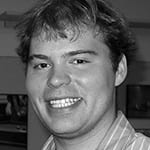 Lee Eckert, M.Arch student
Lee Eckert, M.Arch student
Lee Eckert is pursuing an M.Arch degree at the University of Oregon. He has previously earned a Master of Integrated Design and Construction from Auburn University, and a B.S. of Architecture from the University of Wisconsin-Milwaukee. His research focuses on the performance and indoor environmental qualities of passive houses, and the impacts of IPD on collaboration within the architecture and construction fields. He is grateful to Professor Alison Kwok and the Anthony Wong Scholarship for their support which allowed him to go to this conference.
 Joseph Buccini, M.Arch student
Joseph Buccini, M.Arch student
Joseph Buccini is pursuing his Master of Architecture and the Ecological Design Certificate with a projected graduation in June of 2014. He has a B.S. in Architectural Studies and a Certificate in Urban Planning from the University of Wisconsin-Milwaukee. His research with Professor Alison Kwok focuses on investigating the performance of a Certified Passive House in Dundee, Oregon, looking in particular at energy usage and indoor environmental quality compared to that of similar housing.
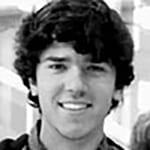 Zack Vacovsky, M.Arch student
Zack Vacovsky, M.Arch student
Zack Vacovsky is a first year M.Arch student at the University of Oregon. He holds a B.A in Architecture from Miami University in Oxford, OH. In addition to group research that focuses on the monitoring of an existing Passive House under professor Alison Kwok, he works as a student energy educator through the UO’s Office of Sustainability. Zack is also the director of community outreach for the Center for the Advancement of Sustainable Living (CASL) at UO. Other interests include writing music, painting, snowboarding and golf.
 Ashleigh Fischer, M.Arch student
Ashleigh Fischer, M.Arch student
Ashleigh Fischer is a Master of Architecture Candidate with a projected graduation in June 2014. She has a B.S. in Architectural Studies with a minor in Structural Engineering from the University of Wisconsin, Milwaukee. Ashleigh has worked as a Graduate Teaching Fellow for Structures I and is currently employed in the Energy Studies in Buildings Laboratory as a Graduate Research Fellow. Her research with Professor Alison Kwok explores the energy performance and indoor environmental quality of the Taccogna Passive House in Dundee, OR.
Thomas D Collins, Alison G Kwok, Sophia E Duluk, “Visible Ventilation: Validating & Illustrating the Performance of a Hybrid Ventilation System in the United States,” 13th International Conference on Indoor Air Quality and Climate, Hong Kong, July 7-12, 2014.
Abstract: Lillis Business Complex classrooms provide 100% outside air via mechanical and mixedmode ventilation. Recently, CO2 sensors were installed in the exhaust ducts to tie ventilation rates to room occupancy for additional energy savings. This study describes and illustrates the hybrid ventilation system and compares ventilation rates before and after the CO2 demand controlled ventilation (DCV) regime was implemented. We hypothesized that the pre-DCV classrooms were overventilated during occupied periods and that the DCV system provides the designed ventilation rate of 15cfm/person. Our research methods included: physical measurements, review of design/operations documents, analysis of building automation system (BAS) data, and discussions with engineers and technicians. Results suggest that the DCV regime provides ventilation rates that are more consistent with the mechanical design intentions than the pre-DCV regime. However, inconsistent BAS data and possible CO2 sensor malfunctions limit the ability for facilities managers to validate performance enhancements and analyze energy conservation.
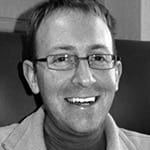 Thomas Collins, Ph.D. student
Thomas Collins, Ph.D. student
Tom Collins is a Registered Architect, a LEED Accredited Professional, and a member of the American Institute of Architects pursuing a Ph.D. in sustainable architecture at the University of Oregon. He has Bachelor of Architecture and B.S. in Building Science degrees from Rensselaer Polytechnic Institute and a Master of Architecture degree from the University of Oregon.
Kindt, Anna, A. Fisher, E. Fox, M. Donofrio, “Intersection of understanding: the digital, tactile and physical in fabric architecture,”Proceedings of Architectural Research Centers Consortium and European Association for Architectural Education 2014 International Conference, Honolulu, HI, February 12-15, 2014.
Abstract: The use of tensile fabric in architecture results in structures that can be both ecologically sensitive and delight the eye — but how do we begin to understand this non-traditional method of defining form and shaping space? Various methods of form finding help in understanding the capabilities of tensile fabric structures. Digital modeling, soap bubbles and stretchable fabrics can assist in understanding the inherent properties of fabric and the natural curvatures formed by the interaction of structure and fabric. These methods, however, are plagued by a steep learning curve and time investment that deters designers from utilizing fabric and makes it difficult to intuitively understand the properties of fabric. This paper explores how our group utilized a full-scale fabric installation meant to educate the user about the possibilities of fabric in architecture through an interactive and tactile experience. This study documented the users’ initial knowledge and comfort level with fabric in architectural applications as well as their understanding of its material properties and compared this understanding to their understanding after interacting with the installation. The results of this study show how the use of a hybrid methodology of exploring a new material can lead to an increased understanding of how to utilize fabric for architectural applications and form finding.
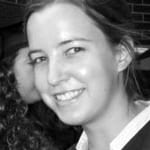 Anna Kindt is pursuing her Master of Architecture degree and the Ecological Design Certificate and will graduate in June 2014. She has a B.S. in Architecture from the University of Michigan and a Graduate Certificate in Historic Preservation from Eastern Michigan University. Her research includes the integration of sustainable strategies in adaptive use projects, architectural design in historic contexts and sustainable strategies in vernacular architecture.
Anna Kindt is pursuing her Master of Architecture degree and the Ecological Design Certificate and will graduate in June 2014. She has a B.S. in Architecture from the University of Michigan and a Graduate Certificate in Historic Preservation from Eastern Michigan University. Her research includes the integration of sustainable strategies in adaptive use projects, architectural design in historic contexts and sustainable strategies in vernacular architecture.
 Amy Fisher is pursuing her Master of Architecture degree and will graduate in June 2014. She has a B.A. in Architecture from the University of California, Berkeley. Her research focus is on material innovations emphasizing environmental responsibility.
Amy Fisher is pursuing her Master of Architecture degree and will graduate in June 2014. She has a B.A. in Architecture from the University of California, Berkeley. Her research focus is on material innovations emphasizing environmental responsibility.
2012-2013
Duluk, Sophia, A. Kwok, H. Nelson, “Comparison of Solar Evaluation Tools: From Learning to Practice, Proceedings of American Solar Energy Society,” American Solar Energy Society: Solar 2013, Baltimore, MD, April 16 – 20, 2013.
Abstract: A number of solar tools assist designers in evaluating a site for shading, solar access, daylighting design, photovoltaic placement, and passive solar heating potential. In the last ten years, handheld equipment and their software capabilities have evolved; coupled with the existing manual tools, we now have a wide range of tools available for solar analysis.
This paper presents a comparative evaluation of solar site analysis tools from the perspective design inputs needed for Passive House certification. Two locations (Eugene, Oregon and Palo Alto, California) are used as base cases for evaluation. We present the results from onsite measurements, software predictions, output accuracy, ease of use, and other criteria to discuss the capabilities of the tools in education and in architectural design practice. We compare five tools: Solar Transit, Solar Pathfinder+ Solar Pathfinder Assistant software, Sun Seeker iPhone app, Solometric Suneye, and HORIcatcher+Meteonorm. Some tools can accurately predict horizon shading and obstructions using GPS and produce handsome computer visualizations, while others require manual tactics. The tools differ significantly, however, in their cost, ease of use, visualization output, and estimation/calculation of radiation. Although these tools are particularly useful for photovoltaic placement, most will allow a calculation of direct radiation. However, one of the critical inputs into the Passive House Planning Protocol is diffuse, rather then direct, radiation. We anticipate at this time (from brief communication with the Meteotest technical department) that the HORIcatcher is the only tool with this capability.
 Sophia Duluk is pursuing an M.Arch degree at the University of Oregon with a focus in Sustainable Technology and a Technical Teaching Certificate. She has a BA in Architectural Studies from the University of Washington. Her research includes passive strategies, ecological building materials, solar analysis, and green metrics. She is grateful to Professor Alison Kwok and the Anthony Wong Scholarship for the opportunity to attend these conferences.
Sophia Duluk is pursuing an M.Arch degree at the University of Oregon with a focus in Sustainable Technology and a Technical Teaching Certificate. She has a BA in Architectural Studies from the University of Washington. Her research includes passive strategies, ecological building materials, solar analysis, and green metrics. She is grateful to Professor Alison Kwok and the Anthony Wong Scholarship for the opportunity to attend these conferences.
 Heather Nelson is a Masters in Architecture student at the University of Oregon who will graduate in 2013. She obtained her undergraduate degree in architecture from Clemson University in 2010. During her time at the University of Oregon she has participated in various research opportunities, including presenting a research paper on solar tools at the Solar2013 American Solar Energy Society and working closely with CASL.
Heather Nelson is a Masters in Architecture student at the University of Oregon who will graduate in 2013. She obtained her undergraduate degree in architecture from Clemson University in 2010. During her time at the University of Oregon she has participated in various research opportunities, including presenting a research paper on solar tools at the Solar2013 American Solar Energy Society and working closely with CASL.
T. Collins, “Campus buildings & student engagement in institutional sustainability efforts,” Proceedings of Architectural Research Centers Consortium 2013 Conference, Charlotte, NC, March 27 – 30, 2013.
Abstract: Colleges and universities are presently engaged in efforts to address the environmental impact of their operations, facilities, and activities. In an effort to provide a way for diverse institutions to compare their efforts in a consistent format, a number of publicly accessible self-reporting systems have emerged since 2006. This paper reviews self-reported sustainability data related to green building and student engagement activities submitted by a sample of 55 institutions that participate in three reporting systems: STARS, ACUPCC, and The College Sustainability Report Card. The objective is to determine the range of approaches across campuses, the usefulness of the data in revealing campus efforts, and unique approaches. Findings suggest that campuses vary widely in enrollments, size of building area, and energy usage, but employ many of the same green building standards and student engagement strategies. Nevertheless, the limitations inherent with the use of self-reported data are addressed.
 Thomas Collins, Ph.D. student
Thomas Collins, Ph.D. student
Tom Collins is a Registered Architect, a LEED Accredited Professional, and a member of the American Institute of Architects pursuing a Ph.D. in sustainable architecture at the University of Oregon. He has Bachelor of Architecture and B.S. in Building Science degrees from Rensselaer Polytechnic Institute and a Master of Architecture degree from the University of Oregon.
Duluk, Sophia, A. Kwok, W. Thompson, T. Woudenberg, “Visible Ventilation: A Return to Passive Cooling,” Proceedings of Architectural Research Centers Consortium 2013 Conference, Charlotte, NC, March 27 – 30, 2013.
Abstract: In 2007, the University of Oregon signed the American College and University Presidents Climate Commitment to take steps toward becoming a carbon neutral campus by reducing greenhouse gas emissions and integrating sustainability into their curriculum. With fossil fuels supplying 76% of total building sector energy consumption (Architecture2030), campuses must adopt energy efficiency policies, which establish more stringent energy targets for new and existing construction, while utilizing renewable energy sources. Not long ago, most campus buildings functioned as naturally ventilated, passively cooled buildings, but with the rising demand for air conditioning, many have moved toward active systems. As new energy conscious buildings are constructed on campus, we wondered about the potential to renovate existing campus buildings to be comfortable while passively cooled.
On the University of Oregon campus there are more then 60 double loaded corridor buildings, few of which currently rely on passive cooling. For our case study, we selected Pacific Hall, a double-loaded corridor building, which relies solely on mechanical cooling, because of its orientation and original reliance on passive cooling. Due to its north-south orientation, occupants on the east and west sides often complain of thermal discomfort in the morning and the afternoon. Over the years, renovations have covered transoms above doors, openings to the corridor have been blocked, and windows, though operable, are generally left closed.
Our approach to determining the passive cooling potential for this building includes: 1) climate analysis, 2) building analysis (enclosure and interior wall systems, building proportions, operable glazing ratio), 3) measure of base case conditions (temperature, humidity, surface temperatures, air movement, CO2 levels) with handheld equipment and data logging sensors, and 4) development of appropriate climate-responsive renovation strategies. We will evaluate the effectiveness of these strategies through 5) prediction of comfort using the ASHRAE Standard 55-2010, Thermal Environmental Conditions for Human Occupancy 6) manual calculations using passive cooling guidelines and computer simulations to examine energy use comparisons, and 7) a carbon emissions saved calculation.
Based on our preliminary research, Pacific Hall has the potential to rely on passive cooling for 5 months of the year with minor interior renovations. If an appropriate solution is found, we hope to adapt the protocol to a number of other buildings on campus and estimate the overall campus carbon reduction that is possible through a shift from mechanical to passive cooling.
 Sophia Duluk is pursuing an M.Arch degree at the University of Oregon with a focus in Sustainable Technology and a Technical Teaching Certificate. She has a BA in Architectural Studies from the University of Washington. Her research includes passive strategies, ecological building materials, solar analysis, and green metrics. She is grateful to Professor Alison Kwok and the Anthony Wong Scholarship for the opportunity to attend these conferences.
Sophia Duluk is pursuing an M.Arch degree at the University of Oregon with a focus in Sustainable Technology and a Technical Teaching Certificate. She has a BA in Architectural Studies from the University of Washington. Her research includes passive strategies, ecological building materials, solar analysis, and green metrics. She is grateful to Professor Alison Kwok and the Anthony Wong Scholarship for the opportunity to attend these conferences.
 Wes Thompson is an undergraduate in his final year of the architecture program. He is this year’s ASHRAE chapter president, and he has been interested and active in building research for a couple of years during his time at the UO. He is also interested in more conceptual design work and hopes to explore that in a professional office after graduation.
Wes Thompson is an undergraduate in his final year of the architecture program. He is this year’s ASHRAE chapter president, and he has been interested and active in building research for a couple of years during his time at the UO. He is also interested in more conceptual design work and hopes to explore that in a professional office after graduation. Toshi Woudenberg is a Master of Architecture student (2013) with a research focus in sustainable design. He has worked for BuildingGreen, the Shenzhen Institute of Building Research, and is currently the Sustainability Education intern at Autodesk San Francisco (summer 2013). Toshi is grateful to Anthony Wong and Alison Kwok for the opportunity to present research at the 2013 ARCC conference, which hosted research and talks on the ‘Visibility of Research’.
Toshi Woudenberg is a Master of Architecture student (2013) with a research focus in sustainable design. He has worked for BuildingGreen, the Shenzhen Institute of Building Research, and is currently the Sustainability Education intern at Autodesk San Francisco (summer 2013). Toshi is grateful to Anthony Wong and Alison Kwok for the opportunity to present research at the 2013 ARCC conference, which hosted research and talks on the ‘Visibility of Research’.
Gretchen Leary, “The Effect of Vaastu Architecture on Heart Coherence,” EDRA44Providence “Healthy + Healing Places” Conference, Providence, RI, May 29-June 1, 2013.
 Abstract: Scientific studies reported by the Institute of HeartMath have shown that when we experience negative, stressful emotions such as anxiety, irritation and anger, our heart rhythm pattern becomes irregular and incoherent. The reverse is true in that when we experience love, appreciation and joy, our heart rhythm pattern is more ordered and coherent. High coherence sends signals to the brain which can reduce reactions to stress, improve hormonal function and immune response and thus an overall sense of well-being. A pilot study was completed in Patagonia, AZ during the Summer of 2012 which measured the heart coherence of nine individuals in both a Vaastu and a non-Vaastu structure. Heart Coherence was measured using emWave® software with a USB module and pulse sensor attached to each subject’s ear. This software detects the pulse and synchronizes to a breathing pacer which then records heart rhythms. These rhythms (heart rate variability) are assigned to low/medium/high states while charts and waveform patterns are visible in real time. The Vaastu structure utilized was a temple cottage designed under ancient mathematical formulas known by Vishwakarmans – the ancient Indian clan of architects and sculptors from South India. These formulas have been used for thousands of years to create town layouts and to design vibrant buildings such as temples, forts and dwellings. The non-Vaastu structure was a one-room Montessori classroom. The software results showed seven of nine subjects had an increase of 1 – 34% combined medium and high heart coherence readings in the temple cottage. This pilot study shows promise yet also exposes the need for more rigorous research including the removal of outside influences that could affect heart rate (such as emotional state or pre-existing heart conditions). Next steps include measuring the heart coherence of a larger number of subjects within two spaces of similar function and size such as a Vaastu temple and a church. If more studies over time show Vaastu architecture can improve heart coherence and therefore influence health, the way we currently approach building and town design would need to evolve — and ancient temples and town layouts may be revealed to have a specific function beyond religion.
Abstract: Scientific studies reported by the Institute of HeartMath have shown that when we experience negative, stressful emotions such as anxiety, irritation and anger, our heart rhythm pattern becomes irregular and incoherent. The reverse is true in that when we experience love, appreciation and joy, our heart rhythm pattern is more ordered and coherent. High coherence sends signals to the brain which can reduce reactions to stress, improve hormonal function and immune response and thus an overall sense of well-being. A pilot study was completed in Patagonia, AZ during the Summer of 2012 which measured the heart coherence of nine individuals in both a Vaastu and a non-Vaastu structure. Heart Coherence was measured using emWave® software with a USB module and pulse sensor attached to each subject’s ear. This software detects the pulse and synchronizes to a breathing pacer which then records heart rhythms. These rhythms (heart rate variability) are assigned to low/medium/high states while charts and waveform patterns are visible in real time. The Vaastu structure utilized was a temple cottage designed under ancient mathematical formulas known by Vishwakarmans – the ancient Indian clan of architects and sculptors from South India. These formulas have been used for thousands of years to create town layouts and to design vibrant buildings such as temples, forts and dwellings. The non-Vaastu structure was a one-room Montessori classroom. The software results showed seven of nine subjects had an increase of 1 – 34% combined medium and high heart coherence readings in the temple cottage. This pilot study shows promise yet also exposes the need for more rigorous research including the removal of outside influences that could affect heart rate (such as emotional state or pre-existing heart conditions). Next steps include measuring the heart coherence of a larger number of subjects within two spaces of similar function and size such as a Vaastu temple and a church. If more studies over time show Vaastu architecture can improve heart coherence and therefore influence health, the way we currently approach building and town design would need to evolve — and ancient temples and town layouts may be revealed to have a specific function beyond religion.
 Gretchen Leary is a second year M.Arch Option III student at the University of Oregon. She has a B.A. in Graphic Design from Pennsylvania State University (1995), a Clinical Ayurvedic Practitioner Certification from California College of Ayurveda (2008) and is graduate and Level 1 Certified Vaastu Consultant from the American University of Mayonic Science and Technology (2011). She has studied Vaastu Science in India with the late Dr. V Ganapati Sthapati of Mamallapuram, Tamilnadu. She is very grateful to Professor Jenny Young, Professor Philip Speranza, Dr. Jessie J. Mercay and the Anthony Wong Scholarship for the opportunity to attend this conference.
Gretchen Leary is a second year M.Arch Option III student at the University of Oregon. She has a B.A. in Graphic Design from Pennsylvania State University (1995), a Clinical Ayurvedic Practitioner Certification from California College of Ayurveda (2008) and is graduate and Level 1 Certified Vaastu Consultant from the American University of Mayonic Science and Technology (2011). She has studied Vaastu Science in India with the late Dr. V Ganapati Sthapati of Mamallapuram, Tamilnadu. She is very grateful to Professor Jenny Young, Professor Philip Speranza, Dr. Jessie J. Mercay and the Anthony Wong Scholarship for the opportunity to attend this conference.

Melissa Anderson, T. Collins, and Alison Kwok, “Zero Net Energy Education: Are We There Yet?,” American Solar Energy Society: Solar 2013, Baltimore, Maryland, April 16-20, 2013.
Abstract: Six years ago, the 2010 Imperative was initiated to address the role of architecture education in responding to global climate change concerns. Meeting the Imperative requires that educators make significant curricular changes to address energy and resource issues in building design. Have schools adjusted their curricula to address the Imperative? What innovative modes of teaching building science and technology courses are being used? Are we providing the proper tools, skills, and resources to help students address the challenges and design a lower-carbon world?
We reviewed syllabi/schedules from required environmental technology courses from faculty of 29 accredited schools of architecture for demographics, resources used, and evidence of effective teaching and learning of zero net energy design topics.
Findings suggest that faculty are spending approximately a quarter of class time on zero net energy topics, roughly half the courses provide experiential learning through project and lab-based activities, and grades are weighted toward exams.
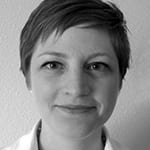 Melissa Anderson, M.Arch student
Melissa Anderson, M.Arch student
Anderson is pursuing an M.Arch degree at the University of Oregon with a Technical Teaching Certificate. Her interests include teaching and research in the areas of passive strategies, ecological building materials, and design pedagogy. Melissa holds an M.S. in teaching from Pace University and a B.A. from St. John’s College-Annapolis, where she studied history of math and science and philosophy. She thanks Professor Alison Kwok and the Wong Scholarship for the opportunity to attend this conference.
 Thomas Collins, Ph.D. student
Thomas Collins, Ph.D. student
Tom Collins is a Registered Architect, a LEED Accredited Professional, and a member of the American Institute of Architects pursuing a Ph.D. in sustainable architecture at the University of Oregon. He has Bachelor of Architecture and B.S. in Building Science degrees from Rensselaer Polytechnic Institute and a Master of Architecture degree from the University of Oregon.
 Kelsey Buzzell and Kyuho Ahn, “Evaluating a Retail Space Using a Systematic Design Approach,” Interior Design Educators Council (IDEC) 2013, Baltimore, Maryland, April 16-20, 2013.
Kelsey Buzzell and Kyuho Ahn, “Evaluating a Retail Space Using a Systematic Design Approach,” Interior Design Educators Council (IDEC) 2013, Baltimore, Maryland, April 16-20, 2013.
Abstract: Background: The case study used a design analysis framework, the A2S model (Ahn, 2012; Appendix 1), that conceptualizes systematic store stimuli and consumer shopping experience relationships by integrating three theories; Kaplan & Kaplan’s cognitive theory (1982), Berlyne’s aesthetic theory (1971), and Mehrabian and Russell’s theory (1974); to evaluate a local bike shop in a Northwest city and to suggest improvements based on the analysis findings. The main objective was to answer the following questions: How do you successfully analyze retail design using a systematic approach? Can spaces be evaluated with specific criteria that allow for adjustments that affect the business/brand? Is the A2S model a design analysis tool that can be used to determine design improvements for retail environments?
Methods, Procedure, & Approach: The shop and brand identity were documented through drawings, pictures, interviews, Myers-Briggs analysis, SWOT diagram, and research into business practices and outreach (seasonal trends, website/online presence, competition). Then, the A2S model was used to generate a series of diagrams that analyzed the zoning of the store layout and comfort and arousal levels (Appendices 2, 3, 4). Initially the investigation was broad and intuitive (big picture), but then it focused on analyzing environmental factors, both ambient and spatial (lighting, temperature, color, goods, etc.). Once specifics were examined, the project aimed to look again at the big picture to make informed design suggestions. The findings, then, suggested design recommendations on how to adjust stimuli to affect approach behaviors of consumers.
Results & Findings: The case study resulted in the generation of a simplified version of the A2S model (Appendix 5), which was then used to analyze the levels of comfort and arousal experienced in the current environment and also to predict an ideal environment. This led to design suggestions that dealt with reorganization of product, improved way finding (visual guides), and creating nodes of high arousal to sell specific seasonal products (Appendix 6). By basing the design results on the motivation of the consumer and the existing environment, the A2S model helped deter impractical design solutions (expensive or trendy) that may have been the outcome of a conventional design studio project.
Conclusions: In the end, this project reinforced that brand identity and retail design are intricately tied. Motivation of the consumer and environmental qualities must be looked at holistically in order to come up with a set of criteria for design. Understanding the target consumer and brand will influence design decisions (balance arousal zones and comfort levels), and the end result should be a designed space that reinforces brand identity to the consumer – a total package. The design should sell the brand. The A2S model allows the evaluator to look at the relationship between the small picture (specific environmental factors) and the big picture (comfort & arousal to brand image), which then leads to an encompassing design process.
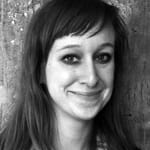 Kelsey Buzzell, M.I.Arch student
Kelsey Buzzell, M.I.Arch student
Buzzell is an MIARC graduate student (2013) and also holds a Bachelors degree in Architecture from the UO. She has been a Graduate Teaching Fellow for two terms and is interested in research and teaching in higher education, as well as, working as a professional post-graduation. She is also interested in travel and research abroad and is interested in concepts related to global design, kit of parts, modularity and fabrication.
 Young, Jenny and Anna Liu, “Making Sustainability Visible: Two Early Childhood Education Centers,” 2013 ARCC Architectural Research Conference — The Visibility of Research, Charlotte, North Carolina, March 27-30, 2013.
Young, Jenny and Anna Liu, “Making Sustainability Visible: Two Early Childhood Education Centers,” 2013 ARCC Architectural Research Conference — The Visibility of Research, Charlotte, North Carolina, March 27-30, 2013.
Abstract: This post occupancy evaluation compares two early childhood education centers built in 2007 in two very different parts of rural Oregon by two independent Head Start organizations. Making sustainability visible was a goal for both these projects at multiple scales: building facilities that gave stability and visibility for programs for early childhood education, fostering environmental awareness and reducing energy costs. Research involved two cycles of evaluation: one in 2008 – a year after occupancy – and a second in 2012 – five years out. Methods included interviews with architects, clients and users, parent surveys and site visits for walk-throughs, observations and collection of environmental data. Findings validate key design principles necessary to the success of both projects that can inform future projects. Read full paper (PDF download).
 Anna Liu is a third year M.Arch Option III student at the University of Oregon. She has a B.A. in East Asian Studies from Harvard and a Masters in Education from UC Berkeley. She is grateful to Professor Jenny Young and the Anthony Wong Scholarship for the opportunity to attend this conference.
Anna Liu is a third year M.Arch Option III student at the University of Oregon. She has a B.A. in East Asian Studies from Harvard and a Masters in Education from UC Berkeley. She is grateful to Professor Jenny Young and the Anthony Wong Scholarship for the opportunity to attend this conference.
2011-2012
 T.Collins, University of Oregon, Nicholas B. Rajkovich, University of Michigan, Alison G. Kwok, Christina Bollo, University of Oregon, “Using Case Studies to Navigate the Course to Zero Net Energy,” 2012 ACEEE Summer Study on Energy Efficiency in Buildings, Monterey, California.
T.Collins, University of Oregon, Nicholas B. Rajkovich, University of Michigan, Alison G. Kwok, Christina Bollo, University of Oregon, “Using Case Studies to Navigate the Course to Zero Net Energy,” 2012 ACEEE Summer Study on Energy Efficiency in Buildings, Monterey, California.
Abstract: In 2006, the American Institute of Architects (AIA) adopted the 2030 Challenge—an initiative to mitigate greenhouse gas emissions and reach zero net energy by 2030. The AIA has also developed a Case Studies Initiative to encourage practitioners to reflect on their designs and to expose students to issues of professional practice. To support both efforts our research project cataloged the design process and performance of six low-energy buildings in the United States.
The goal of our project was to gain a better understanding of how design intent, team dynamics, and building delivery processes affect long-term building performance. Our research methodology is primarily qualitative; it included gathering metrics of building performance to pre-select each project and then conducting structured interviews with the project architects, engineers, and facilities managers. Interviews focused on: team building, goal setting, technology, process, management and relationships, barriers, and future work.
The analysis of the transcripts revealed nuances in the narrative text and salient themes across the cases. Three themes emerged from the qualitative analysis process: design innovation often requires significant client/owner buy-in; team collaboration fuels goal setting and decisionmaking processes; and mandates and incentives, although influential, do not drive the decision making process for low-energy buildings.
The methods and results have been disseminated via the internet, a university course, and several conference papers to illustrate the challenges of high performance building design. Qualitative analysis can supplement the building performance case studies already conducted by numerous organizations; the results may be helpful in shaping energy efficiency policy. Read full paper on the ACEEE website.
 Thomas Collins, Ph.D. student
Thomas Collins, Ph.D. student
Tom Collins is a Registered Architect, a LEED Accredited Professional, and a member of the American Institute of Architects pursuing a Ph.D. in sustainable architecture at the University of Oregon. He has Bachelor of Architecture and B.S. in Building Science degrees from Rensselaer Polytechnic Institute and a Master of Architecture degree from the University of Oregon.
Erik Bonnett, Carrie Lee, Ian Wolfersteig, University of Oregon, “There Is Great Daylight! But The Lights Are On: Daylighting Effectiveness And Electric Lighting User Patterns In A Middle School,” Proceedings of World Renewable Energy Forum 2012,Denver, Colorado, May 13-17, 2012.
Abstract: It is a common story in ostensibly daylit buildings: the architectural design could deliver energy savings and productivity gains, but user behavior intercedes, and anticipated outcomes are not achieved. Thus, a better understanding of user behaviors and preferences in daylit spaces can help improve design strategies, provide effective occupant education resources, and deliver greater energy and productivity gains.
During a site visit to the Baker Prairie Middle School in Canby, Oregon, the research team noticed that classroom daylighting strategies, namely skylights and Solatubes®, were not being fully utilized. In many classrooms, shades, dampers, and blinds were drawn while electric lights were on. This apparent pattern of underutilization contrasts sharply with the clear design intent and with extensive simulation undergone to ensure classrooms were adequately daylit. This paper reports on a study constructed to uncover if and why these daylight strategies are underutilized and what can be done to improve utilization.
The primary conclusion drawn from this investigation is that implementation of daylight design strategies was not predictive of either electric lighting or daylighting device use during the study period. However, three electric and daylight usage typologies relating to daylight availability and space occupancy were uncovered and analyzed. These distinct usage typologies suggest that daylight designs that accommodate the needs of varied user patterns would likely perform better than designs that assume a “typical occupant.” In addition, alterations to typical daylight design strategies to increase performance are proposed. Read full paper on the ASES website. View presentation on the ASES website.
 Erik Bonnett recently completed an M.Arch degree at the University of Oregon with a certificate in Technical Teaching in Architecture. His thesis investigated and visualized the anatomy of a food distribution, processing, and retail system in a sustainable city/region. More broadly, his research has focused on the relationship between human behavior and design of the built environment, especially within the context of sustainability. Before graduate work, Erik was a Sustainability Consultant at Rocky Mountain Institute and received a B.A. in Architecture from Washington University in Saint Louis.
Erik Bonnett recently completed an M.Arch degree at the University of Oregon with a certificate in Technical Teaching in Architecture. His thesis investigated and visualized the anatomy of a food distribution, processing, and retail system in a sustainable city/region. More broadly, his research has focused on the relationship between human behavior and design of the built environment, especially within the context of sustainability. Before graduate work, Erik was a Sustainability Consultant at Rocky Mountain Institute and received a B.A. in Architecture from Washington University in Saint Louis.
Sara Tepfer, Alison Kwok. “Solar Ice Cream: Achieving Net-zero through an integrated retrofit approach”. World Renewable Energy Forum 2012. Denver, Colorado. May 13-17, 2012.
Abstract: Many strategies, standards, and policies have been proposed to minimize the environmental and economic costs associated with building energy inefficiencies. One such approach is net-zero energy design (NetZED), which can be applied to new construction and, more importantly, retrofits of existing buildings. The NetZED retrofit approach requires thoughtful and data-driven design decisions, which aim both to minimize energy consumption and to produce enough energy to offset unavoidable energy expenditures.
This paper presents a case study examining energy consumption and building envelope performance of a popular ice cream shop in Eugene, Oregon. It was hypothesized that energy audit data can be used to develop net-zero retrofit strategies for this establishment, which integrates onsite renewable energy sources. Onsite data collection included a plug load survey, field readings of nameplates of lighting, pumps, and fans, and acquisition of utility data to determine peak energy use. In conjunction with another study, the building envelope’s air tightness was examined.
Data from this audit indicate seasonally dependent high process and cooling loads, a leaky envelope, and relatively high solar energy production potential. These results were used to develop retrofit measures aiming to bring the building to net-zero by both improving the existing structure and incorporating on-site renewable energy production. It is assumed that if energy audit data are obtained prior to the design process, architects and engineers will recognize consumptive hotspots and identify the demand and potential for integrated onsite renewable energy production. Read full paper here.
 Sara Tepfer completed her undergraduate degree at the University of Oregon in 2012 and is currently a second year M.Arch Option III student at UC Berkeley. Her research interests include net-zero energy design process/pedagogy and lifecycle environmental and human health impacts of building materials. She is grateful to the Anthony Wong Scholarship Fund for enabling such incredible opportunities for students and to Alison Kwok for the encouragement and support.
Sara Tepfer completed her undergraduate degree at the University of Oregon in 2012 and is currently a second year M.Arch Option III student at UC Berkeley. Her research interests include net-zero energy design process/pedagogy and lifecycle environmental and human health impacts of building materials. She is grateful to the Anthony Wong Scholarship Fund for enabling such incredible opportunities for students and to Alison Kwok for the encouragement and support.